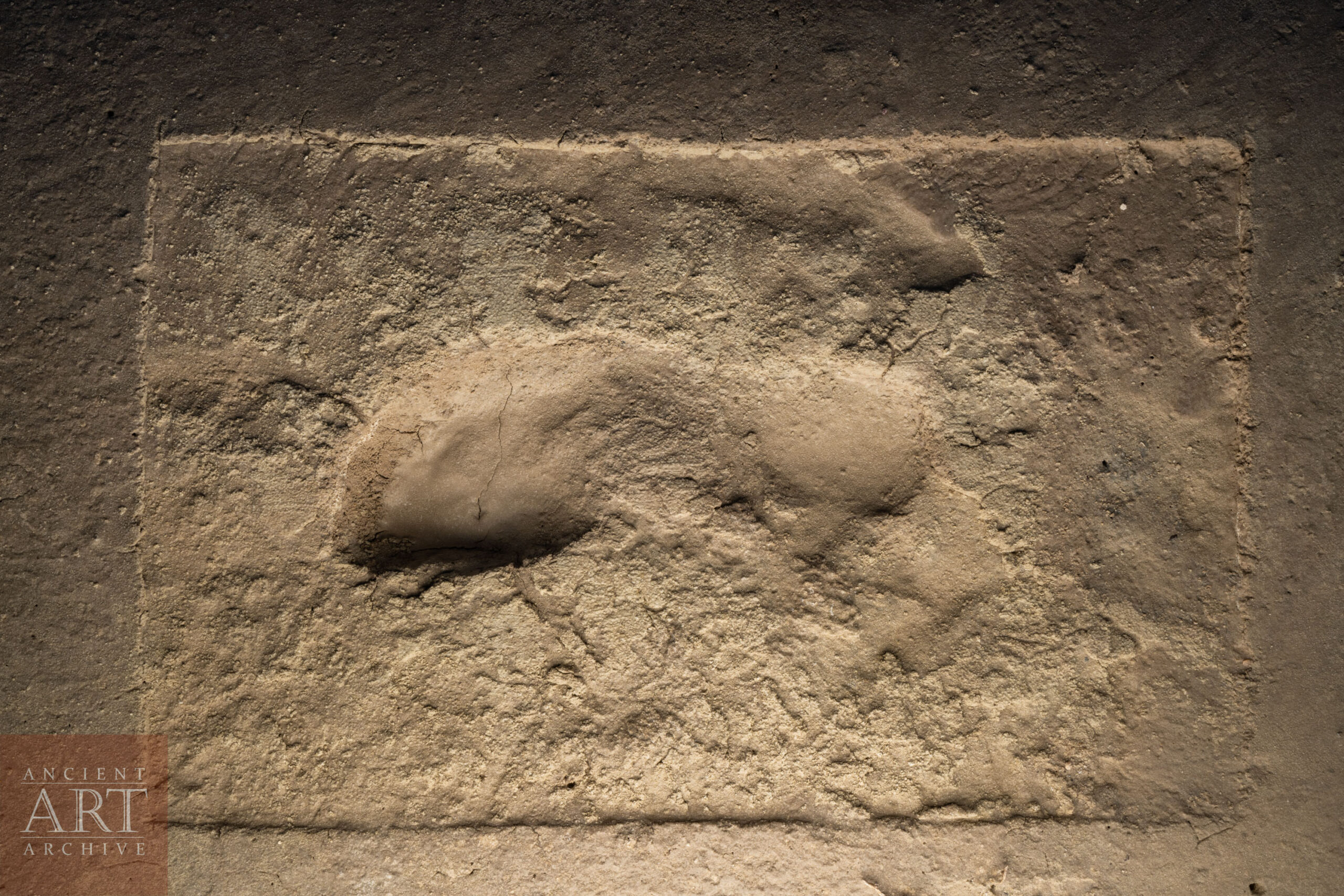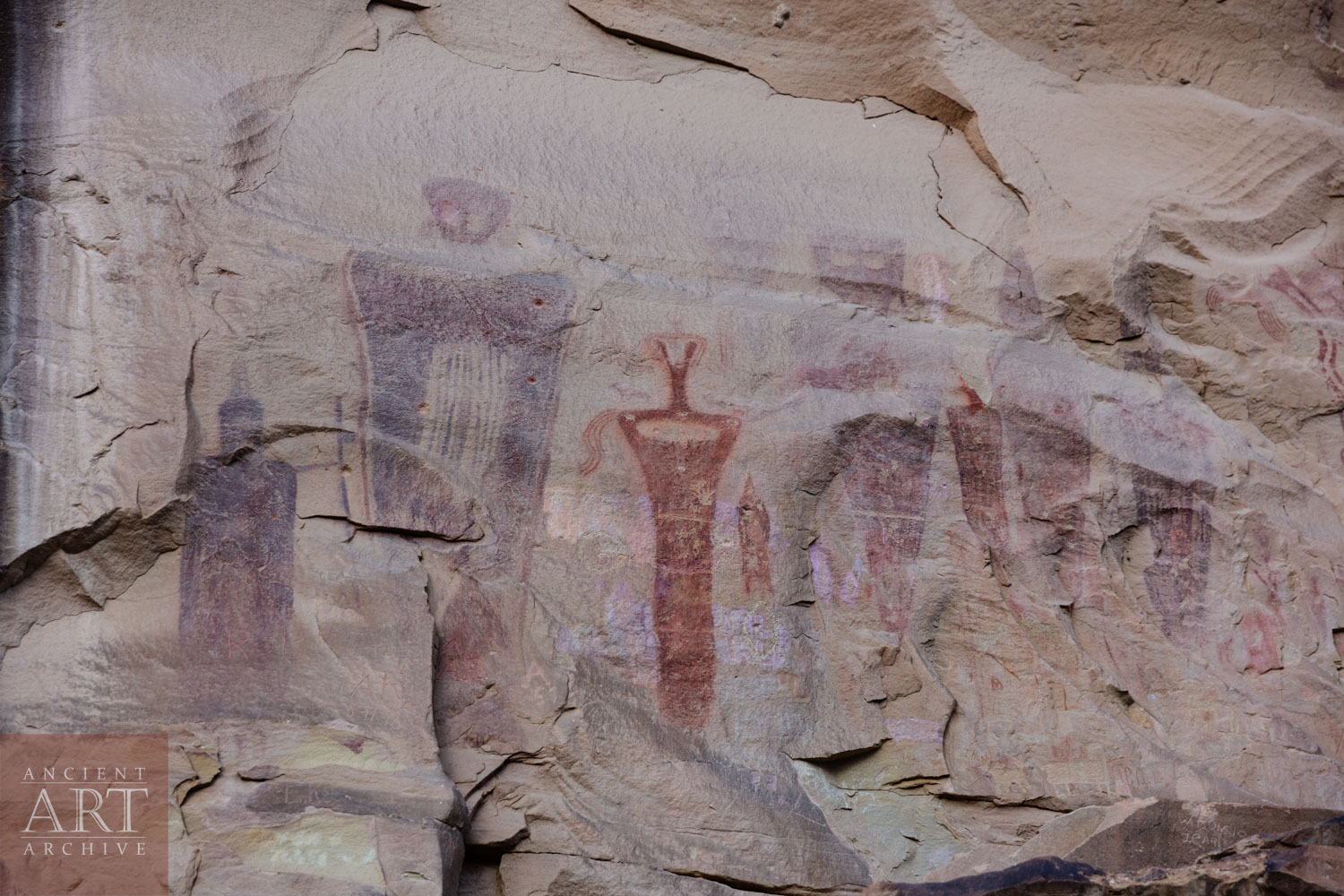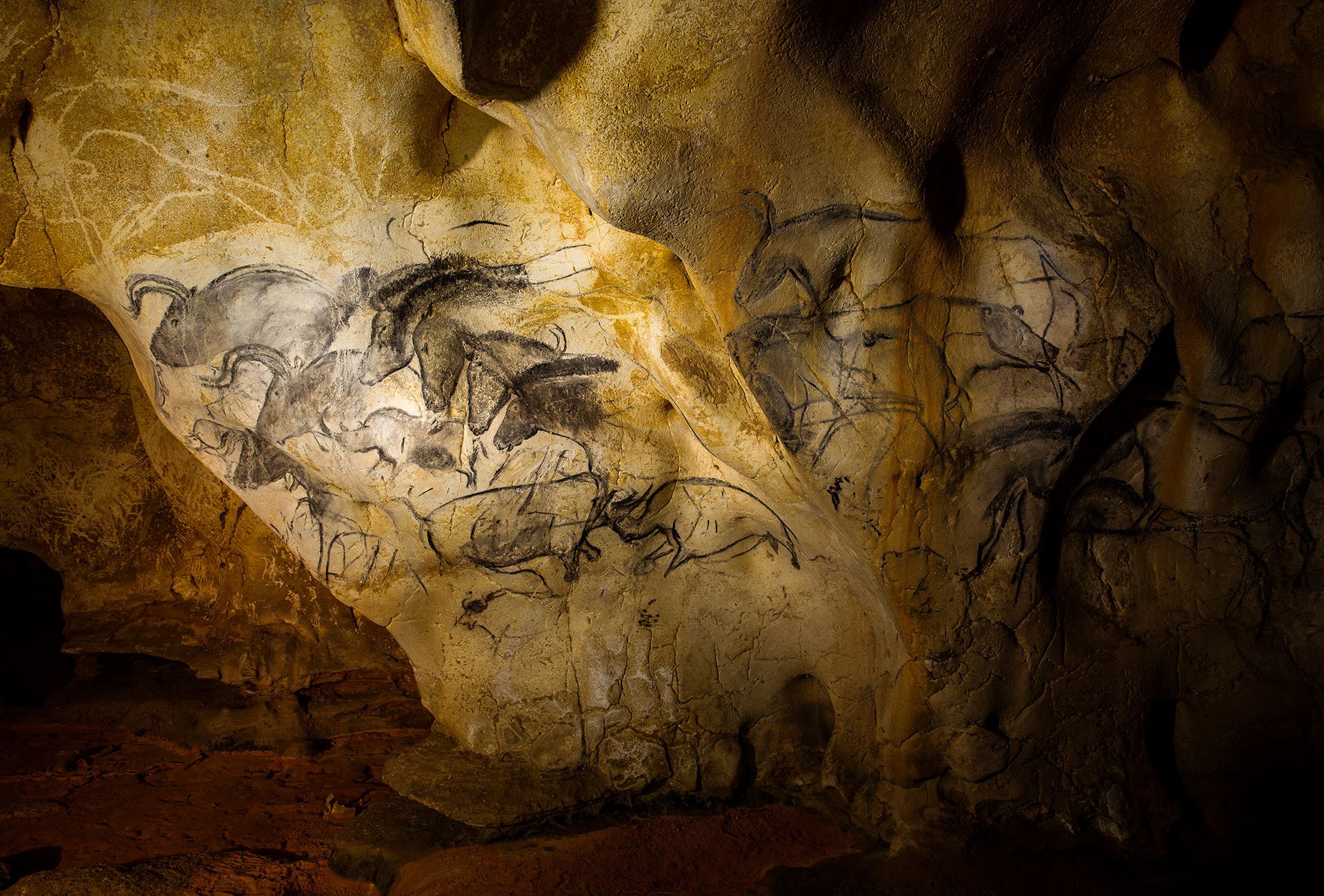A human footprint at the Utah Test and Training Range. The print is estimated to be over 12,000 years old.
“This story may not yet live on the paper pages of our history books, but it’s been preserved here, embedded into the fabric of our earth.” -James D. Calwey Northwest Band of the Shoshone
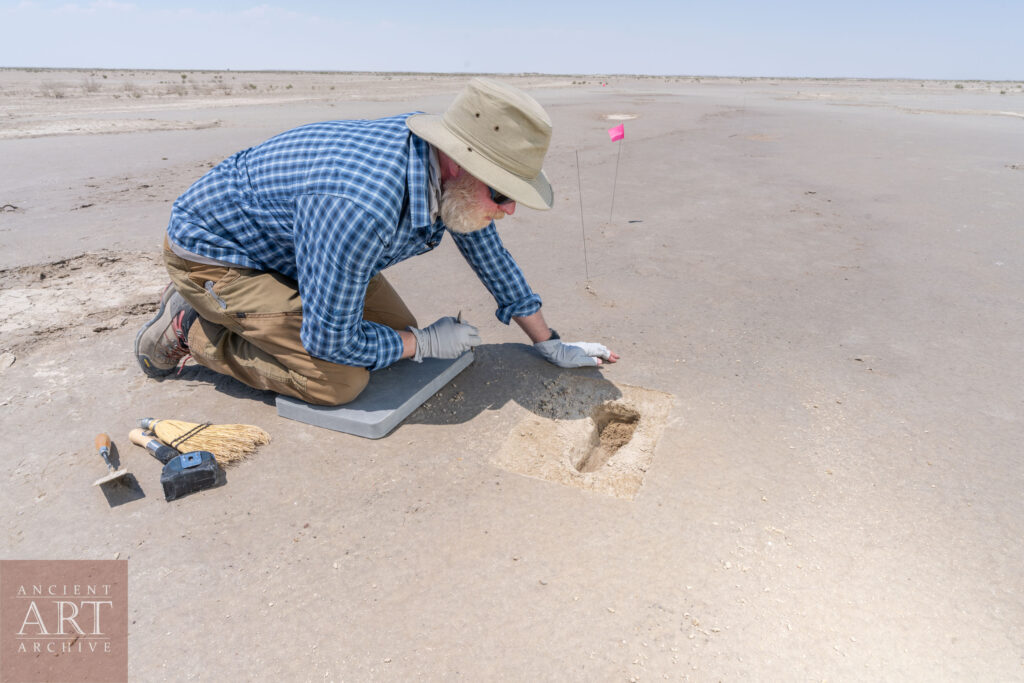
It’s hard to imagine, but the Great Salt Lake Desert of Utah, this hot, flat, white, sun-blasted landscape, was once a lush marshland.
Thirteen thousand years ago, as historic Lake Bonneville retreated to become the Great Salt Lake, a now-dead overflow river formed a rich, wide delta across much of North Central Utah. If you’ve ever looked out the airplane window on landing in Salt Lake City and seen that marshland, you have seen what the land of the Great Salt Lake Desert once was.
It was a vastly different world. The weather was cooler. The Old River Bed Delta —as archaeologists now call it— supported wildfowl, bison, and other large quadrupeds.
About 12,000 years ago, a person was walking in one of the delta’s braided streams. Their foot sunk into the stream’s mud, and sand quickly filled the print. More mud soon covered that sand, sealing the print.
Twelve thousand years later, archaeologist Daron Duke of the Far Western Archaeological Research Group was driving across the same land with researcher Thomas Urban. They were conducting an archaeological survey of the Utah Test and Training Range for the United States Air Force. In the morning light after a rare rain, they noticed evenly spaced marks in the desert floor that reminded Urban of trackways he had worked on at White Sands in New Mexico. The trackways were near a hearth site that Duke excavated for the Air Force in 2015. That site—called Wishbone—revealed bird bones, willow charcoal, spear points used to hunt very large mammals, and most intriguingly, tobacco seeds. Radiocarbon dating put the finds at 12,300 years ago. There is every reason to think that the footprints Duke excavated are of similar age.
Reflecting on finding the original footprints, Duke said,
“The real ah-ha moment was a few days later, when I was alone and excavating … I skimmed the surface layer off two (footprints), and they were nondescript. The third one excited me because I could see the basic outline of a foot. As I removed sand infill from the mud “mold” of the print and revealed the toes of a bare foot, I was struck.”

A 12,000-year-old human footprint as it first appeared after excavation on the Utah Test and Training Range.
“The military mission has preserved archaeology that would not survive elsewhere”
says Hill Air Force Base Cultural Resource Manager Anya Kitterman. The survey project of the Test and Training Range was designed to assess what is on the landscape that the Air Force manages. Foundational to that process is the involvement of Native American communities who have a connection to the land.
The Air Force consults with 22 tribes in 8 states in its management of the Utah Test and Training Range. Kitterman stresses that those relationships are critical to resource management. She adds that one of the primary goals of the survey is to “get as many tribal members on the ground as possible.”
This past July, during a scheduled pause in Range activity, I accompanied the Air Force and Far Western to the Trackway and Wishbone sites while the Air Force was doing additional work aimed at providing concrete dates for the footprints.
Also visiting were elders of the Confederated Tribes of the Goshute Reservation and Northwestern Band of the Shoshone Nation. Shoshone spiritual leader Rios Pacheco blessed the site and archaeologists with prayers and burning sweetgrass. He also gave members tobacco seeds to offer to the site, spiritually replacing what had been removed.
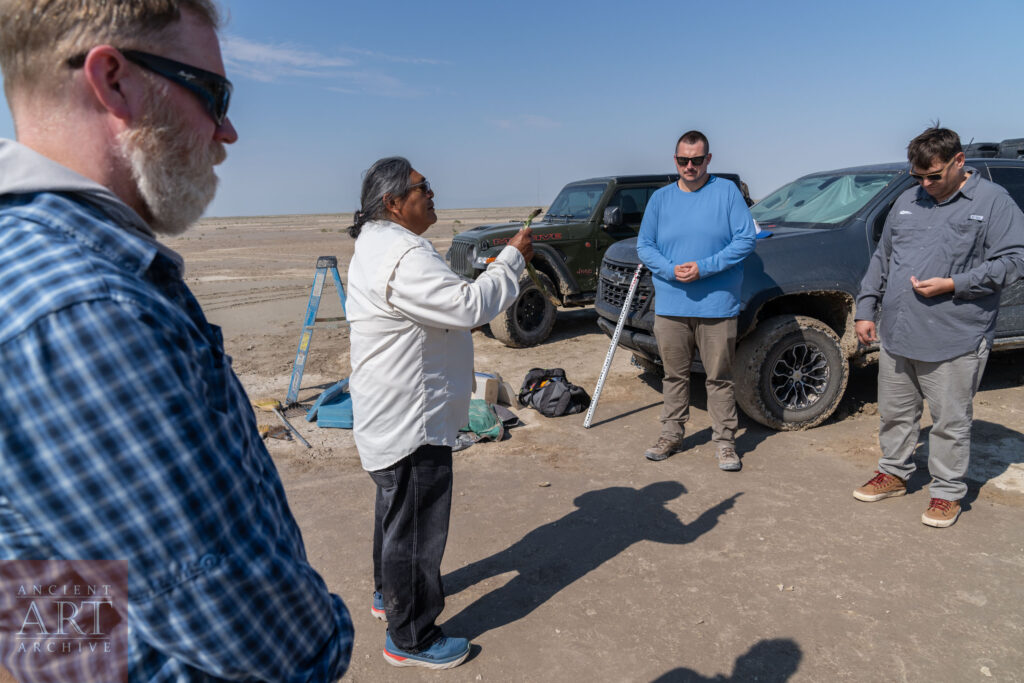
I asked James Cawley, Ancient Art Archive collaborator, Creative Director for the Northwestern Band of the Shoshone Nation and tribal member, how he felt about the footprints.
“I feel good about these old footprints. These footprints make me feel proud of my Native heritage and thankful for those who walked before me. The footprints represent a vast history of Indigenous people who called this continent home for over 12,000 years. This story may not yet live on the paper pages of our history books, but it’s been preserved here, embedded into the fabric of our earth.”
You can see James’ vision of the land as it looked to his predecessors in this Instagram reel (HERE).
Sometimes archaeology struggles with a personal connection. It’s a stretch for most of us to make the empathetic leap from carbon-14 dates and stone tools to the actual people who lived in the past. It’s one of the reasons that the Archive chooses artwork to look at people in the past.
The Old River Bed Delta trackways themselves don’t change the timeline of humanity in North America like the White Sands footprints did. However, they certainly personalize the past. What the Air Force and Far Western have uncovered in Utah is a personal link to our collective history and the story of the Continent.
It’s hard to look at the imprint of a human foot and not think of watching our own footprints on a beach as an incoming tide fills the prints with water and sand. They provide a direct connection to an individual in the deep past.
I’ve often said that the landscape tells its own story. That is one of the reasons that I’m drawn to ancient artwork on the landscape. There is a story told out there if we choose to listen.
October, 2024
